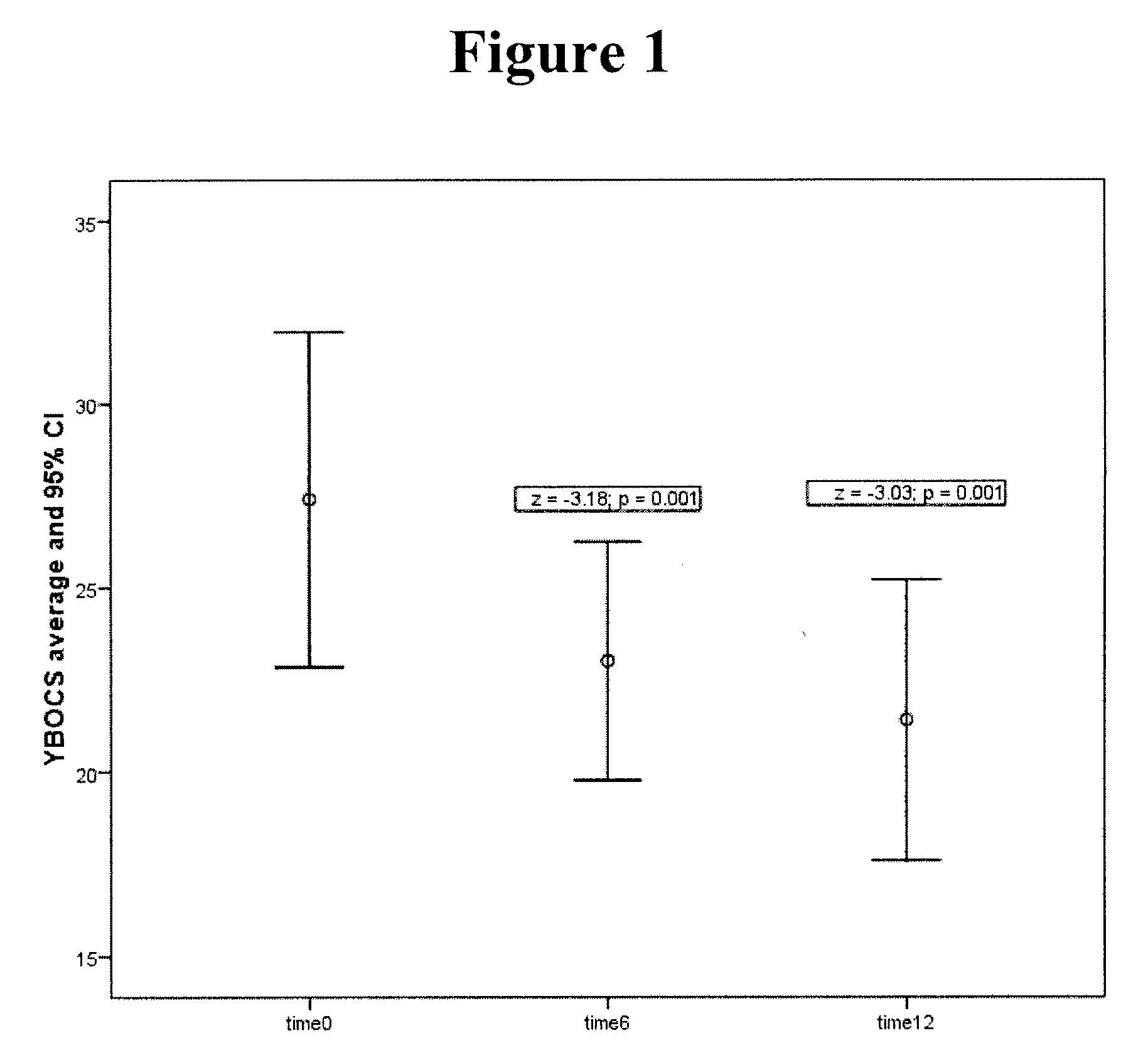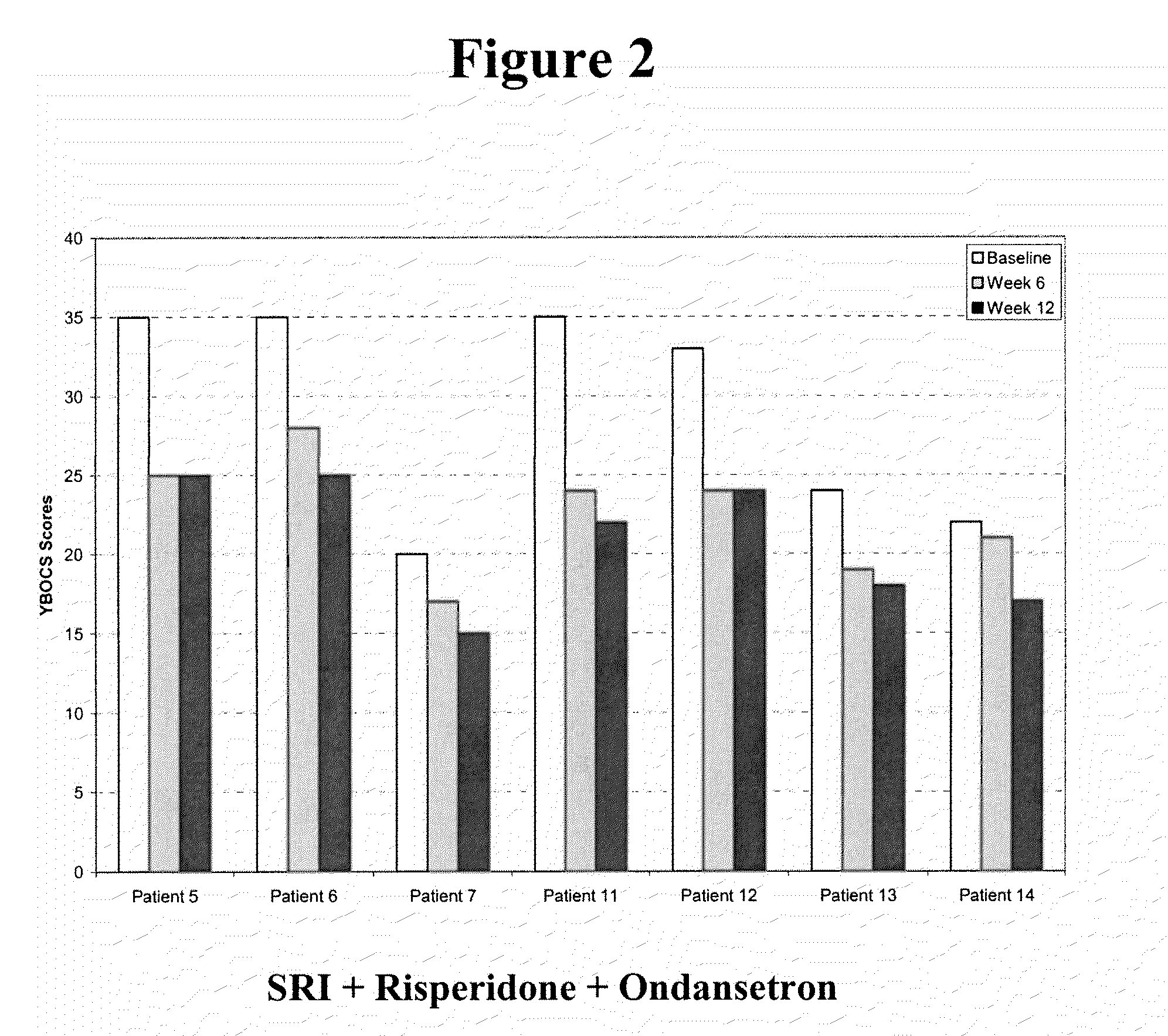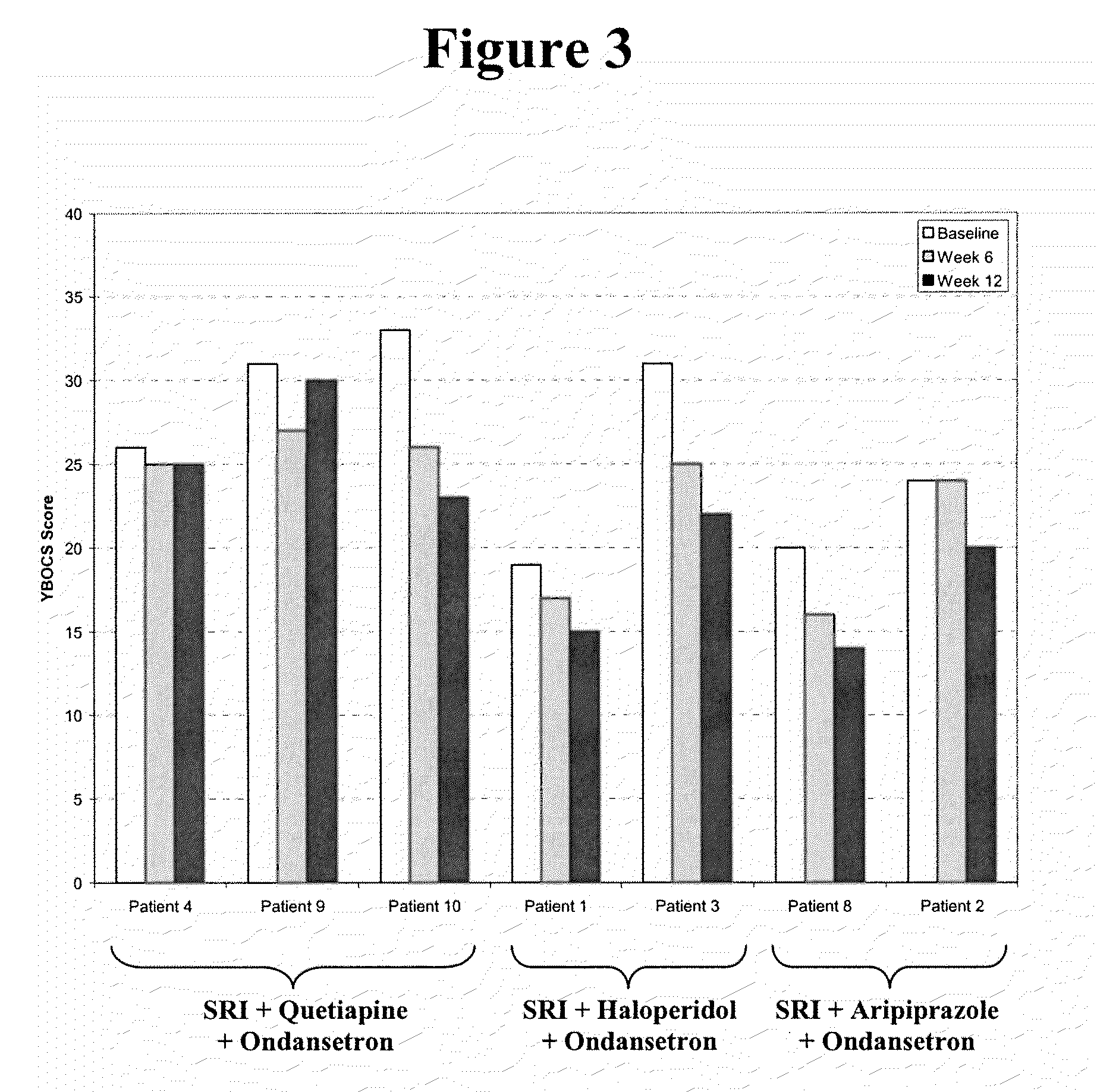Method of treatment of obsessive compulsive disorder with ondansetron
a technology of obsessive compulsive disorder and ondansetron, which is applied in the direction of biocide, nervous disorder, drug composition, etc., can solve the problems of only providing temporary relief, unable to adequately respond, and a greater proportion of patients that fail to experience complete remission of symptoms, so as to improve the symptoms of ocd and improve the effect of ocd symptoms
- Summary
- Abstract
- Description
- Claims
- Application Information
AI Technical Summary
Benefits of technology
Problems solved by technology
Method used
Image
Examples
example 1
Ondansetron 0.75 mg Sublingual Tablet Composition
[0045]Individuals suffering from OCD may be administered the following ondansetron 0.75 mg (free base) sublingual tablet. A sublingual tablet of low dose of ondansetron may be prepared according to the formulation set forth in Table 1.
TABLE 1Ondansetron sublingual tabletQuantity (mg / lozenge)StrengthComponentmg%Ondansetron HCl dihydrate0.940.45Pharmaburst ™ B2:133.5663.60mannitolsorbitolcrospovidonesilicon dioxide(SPI Pharma, Wilmington,DE)Croscarmellose sodium104.76Sodium carbonate178.10Sodium bicarbonate2310.95Natural and artificial3.01.43spearmint FONA# 913.004Silicon dioxide8.03.81Silicon dioxide colloidal2.00.95Sucralose1.500.71Sodium stearyl fumarate10.04.76Colorant10.48Total lozenge weight (mg)210100
[0046]The sublingual tablets may be manufactured using a dry process, which includes screening, blending, and compression steps. The screening steps are performed to de-lump the active drug substance and the excipients. The sublingua...
example 2
Ondansetron 0.4 mg Sublingual Tablet Composition
[0057]Individuals suffering from OCD may be administered the following ondansetron 0.4 mg sublingual tablet. A sublingual tablet of low dose of ondansetron may be prepared according to the formulation set forth in Table 2. The ondansetron 0.32 mg (free base) tablet may be manufactured according to the same process described with respect to Example 1.
TABLE 2Ondansetron sublingual tabletQuantity (mg / lozenge)StrengthComponentmg%Ondansetron HCl dihydrate0.40.60Pharmaburst ™ B2:13463.45mannitolsorbitolcrospovidonesilicon dioxide(SPI Pharma, Wilmington,DE)Croscarmellose sodium104.76Sodium carbonate178.10Sodium bicarbonate2310.95Natural and artificial3.01.43spearmint FONA# 913.004Silicon dioxide8.03.81Silicon dioxide colloidal2.000.955Sucralose1.500.71Sodium stearyl fumarate10.04.76Colorant10.476Total lozenge weight (mg)210100
example 3
Ondansetron Peroral Tablet
[0058]Individuals suffering from OCD may be administered the following ondansetron peroral tablet. An immediate release tablet of low dose of ondansetron (0.4 mg free base) may be prepared according to the formulation set forth in Table 3.
TABLE 3Low dose ondansetron tabletComponentQuantity (mg)Ondansetron HCl dihydrate0.5Povidone K29 / 3216.6Sodium Starch Glycolate (SSG)7.4Starch 150015.0Lactose Fast Flow82.0Prosolv SMCC 9067Sodium bicarbonate160Magnesium Stearate1.5Total350
Manufacturing Process
[0059]Dispensing: Screen the ondansetron HCl and excipients through screen #30. Dispense the required quantities of each ingredient.
[0060]Blending:[0061]1. Transfer the ondansetron hydrochloride and Povidone K 29 / 32 to a V-Shell blender and blend for 2 minutes.[0062]2. Add SSG and Starch 1500 to Step 1 and blend for another 2 minutes.[0063]3. Add Lactose Fast Flow and Prosolv SMCC 90 to Step 2 and blend for another 10 minutes.
[0064]4. Mix an equal amount of the blend f...
PUM
| Property | Measurement | Unit |
|---|---|---|
| concentration | aaaaa | aaaaa |
| concentration | aaaaa | aaaaa |
| concentration | aaaaa | aaaaa |
Abstract
Description
Claims
Application Information
 Login to View More
Login to View More - R&D
- Intellectual Property
- Life Sciences
- Materials
- Tech Scout
- Unparalleled Data Quality
- Higher Quality Content
- 60% Fewer Hallucinations
Browse by: Latest US Patents, China's latest patents, Technical Efficacy Thesaurus, Application Domain, Technology Topic, Popular Technical Reports.
© 2025 PatSnap. All rights reserved.Legal|Privacy policy|Modern Slavery Act Transparency Statement|Sitemap|About US| Contact US: help@patsnap.com



